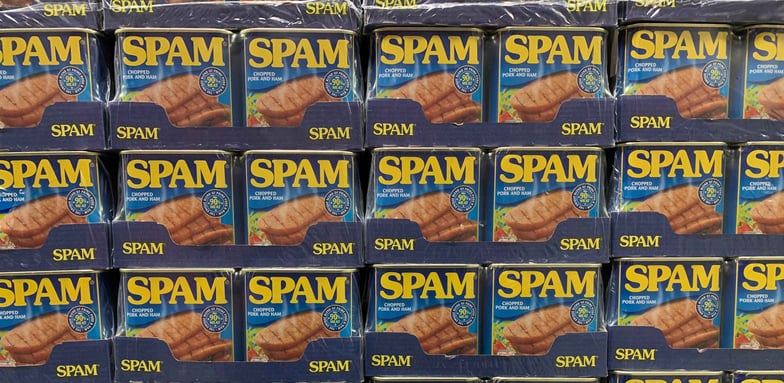
When I order a package online, I'm usually given an expected delivery date and time - and this is amazing. There's so much that goes into the delivery of that package: where it's shipping from, how busy the facility is, delivery schedules, the day of the week, staffing, etc. And as the recipient, I don't have to worry about any of this, because there are a ton of people and good processes working behind the scenes so that I can trust that date. In short, their reputation precedes them.
It's the same for sending emails: there is a ton that goes on behind the scenes (especially here at rezora) to ensure that your emails are delivered successfully. For most people, you don't need to know about email "deliverability" and reputation. You send an email, and it arrives instantly at the destination, like magic. However, anyone who depends on email marketing can benefit from a quick peek under the hood.
As an example, say that you send an email to support@rezora.com (and I recommend that you do sometime). When an email is sent, it is handed from server to server (much like a package is routed through various delivery hubs), getting closer and closer to the intended recipient's email server (rezora.com), where the big decisions are made. That email server is going to examine a ton of things very, very quickly to determine what to do with that email. Everything from the content of the email, the subject line, the sending email permissions, the recipient's settings - and especially the sender's reputation. From all of this, the email server generates a kind of "score", which will determine if the email is sent to the inbox, whether the images and other content are downloaded, or even if the email is refused for delivery outright.
What does this mean for the savvy digital marketer? The main thing to know is that the wider internet community keeps track of your emailing practices. How often you're sending, to how many recipients, and the results (open rates, number of spam reports, etc.) are all used to determine your online reputation. And this reputation can easily take a hit if a lot of your emails start going to spam, or even if they simply aren't being opened very often. In general, this is a good thing - it's a way for the internet community to quickly identify pesky spammers and block malicious content. But for anyone who relies on their email marketing, and keeping those conversations "open", it can be a real hazard - so what can be done?
There are a ton of great resources out there for crafting the perfect subject line, improving your content, segmenting your lists and sending more targeted marketing (see the great links below). But even before worrying about diving into all that, the main thing is to be aware that you have an online reputation - and so do your colleagues using the same email domain (e.g. @rezora.com). Whether you're sending an email to promote a particular listing, or just nurturing your contact lists with relevant local news and content, you want to be measuring the outcome, making small changes to help promote engagement, and limiting unsubscribes. While there are a lot of things you can do to improve your marketing, here's a short list to get you started:
1. Make sure you're using a good platform like rezora. Shameless plug, I know. But using a good platform that prioritizes deliverability like rezora is crucial when you're doing email marketing, especially at bigger scales. rezora works with your team to ensure that emails are reliably authenticated and provides you with the tools you need to measure and monitor your engagement.
2. Send tailored content to smaller lists of contacts. Sure, it can take more time, but this is likely the most important best practice you can adopt. One size fits all marketing simply doesn't fit anyone - you'll see extra unsubscribes and low engagement from an "eBlast". If instead you send customized, local content to a targeted audience, you'll see major results. For example, let's say you have three listings you would like to promote. Sending one email containing all three listings can be effective sometimes, but you'll almost always see better results if you send three emails, each promoting one listing to just the contacts that you think would be interested in that listing. With rezora, you can accomplish this quite easily using our new Zephyr content builder by quickly copying, editing, and scheduling a new piece to a slightly different audience.
3. Stay engaged with your contacts. When you're sending to your contacts, follow up with them. If you spot that a contact isn't opening or clicking on your emails, it might be a good idea to reach out to them individually to confirm that you have their best contact info. This is a good way to make sure you have the right email address, and to have a conversation with them about their interests - and then change how you market to them accordingly. Or if a contact is really engaged with listings in a particular area, set up lists so that you can include them when marketing any nearby listings, local events in the area, etc. These little things add up very quickly and nurturing these relationships will keep you front of mind for your contact network.
Marketing done right could be a full-time job, but with the right tools, it doesn't have to be! Just adopting a few best practices, measuring the results, and adapting will take you really far. And all the while your reputation (and your company's) improves and precedes you.
Further reading:
Avoiding The Spam Folder and Deliverability Best Practices
10 Tips To Keep Email Out Of The Spam Folder
Avoiding Spam Filters | Email Marketing and Deliverability
19 Tips to Write Catchy Email Subject Lines [+ Examples]
24 Email Marketing Best Practices Tips for 2020



